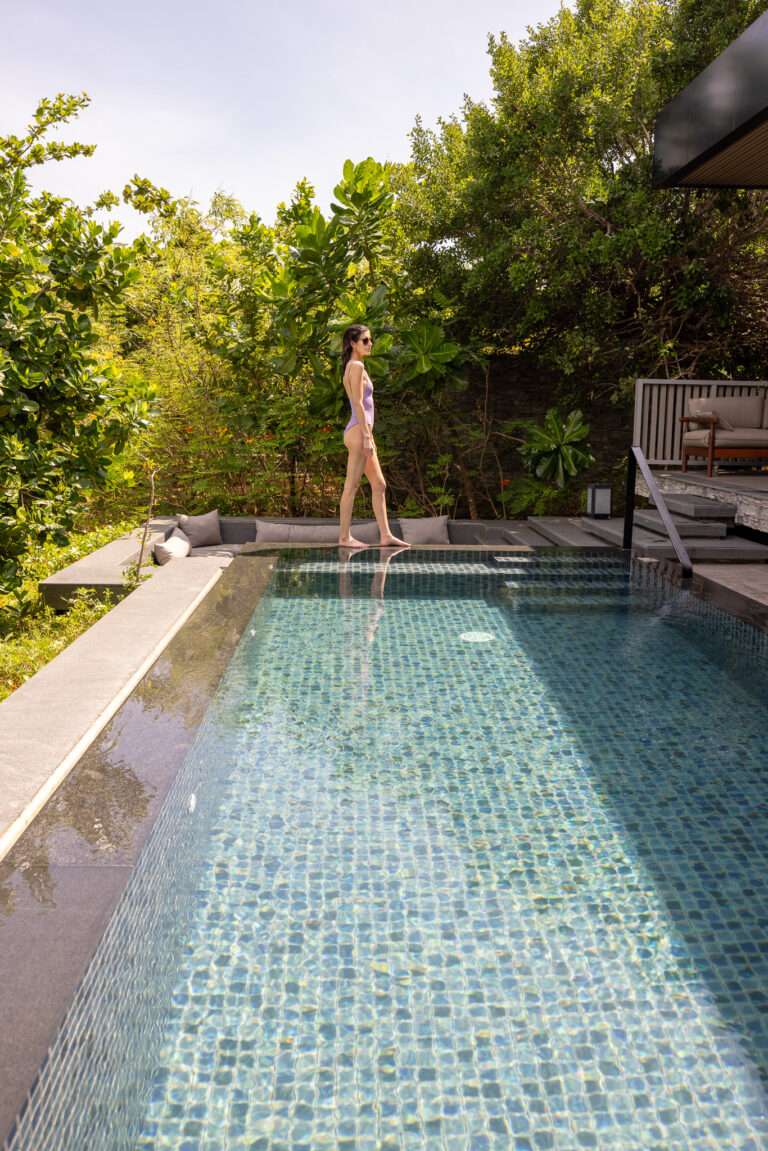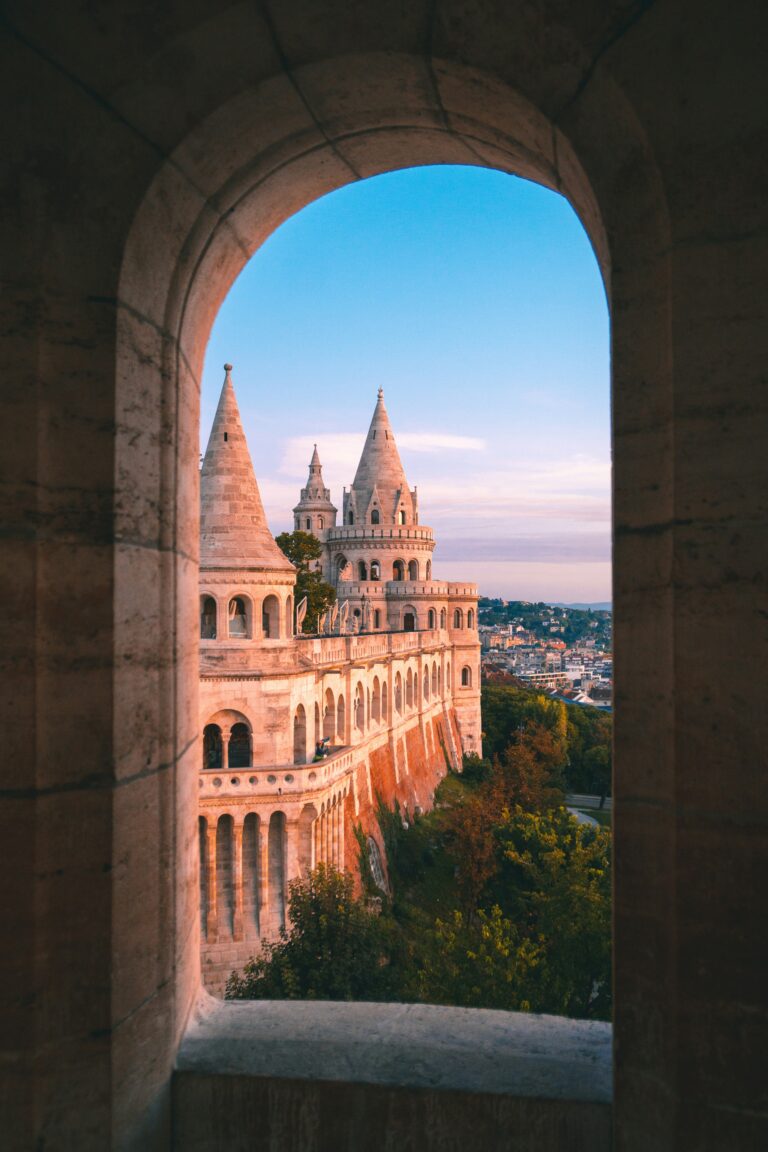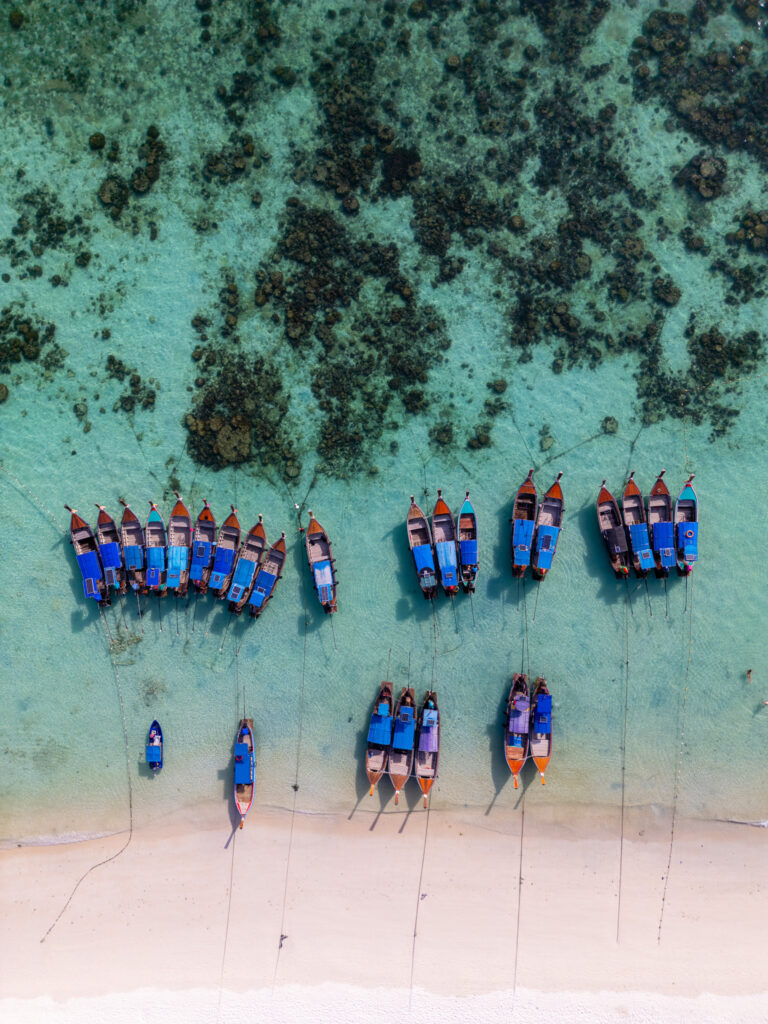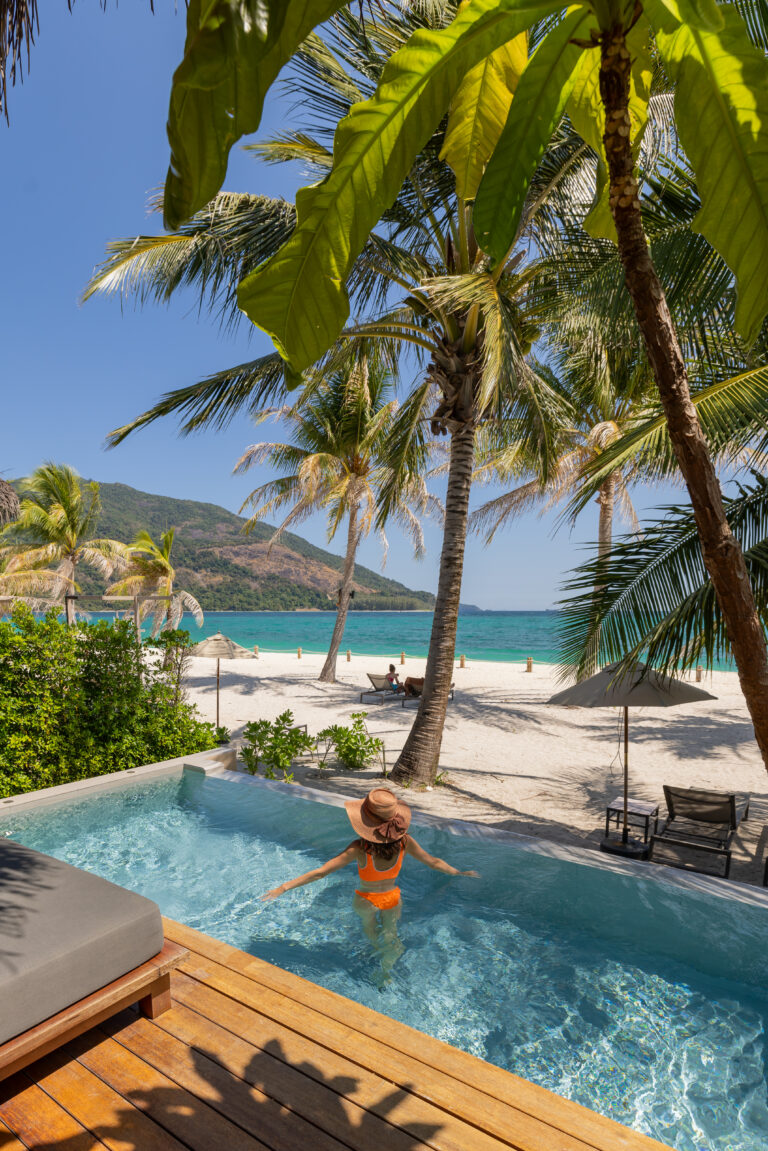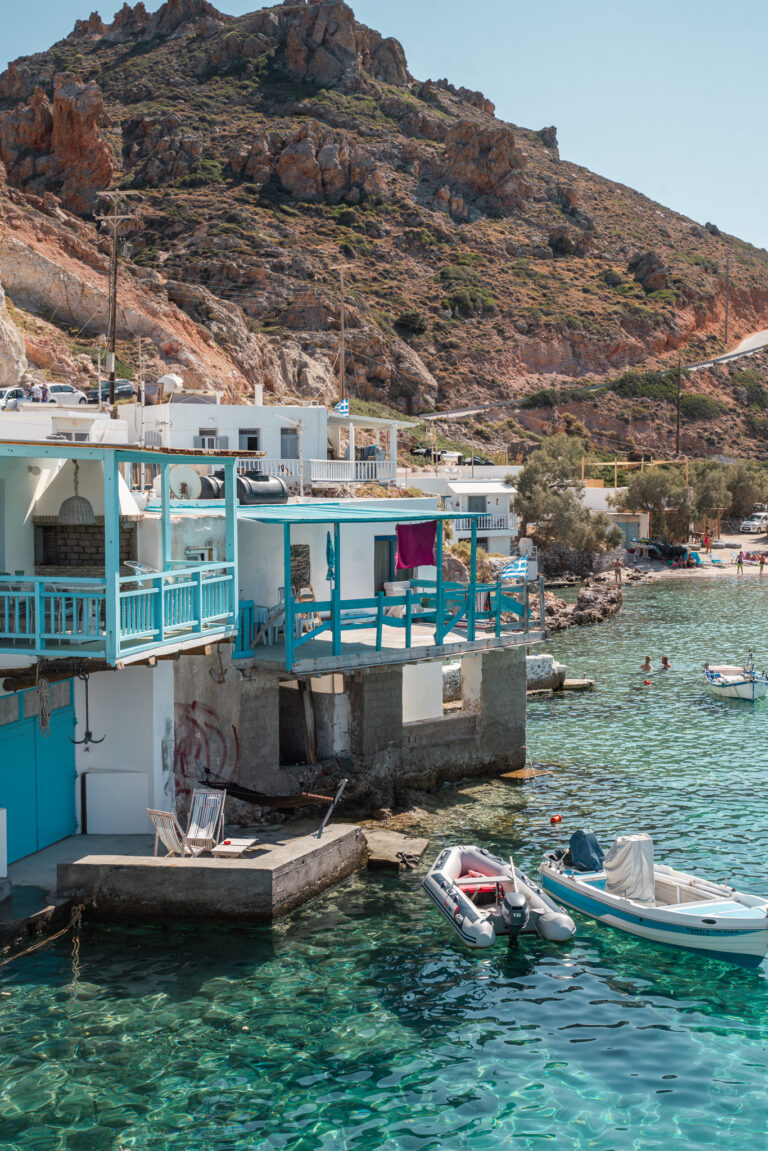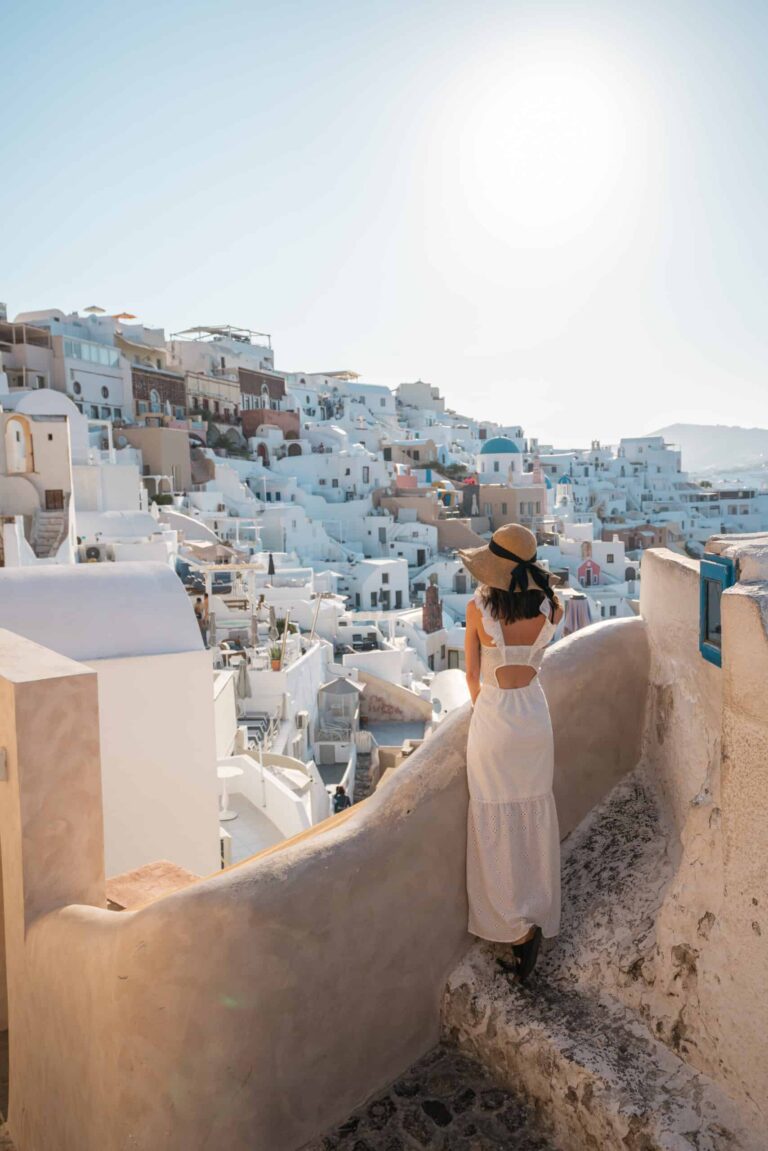Make the most of your time in Jaipur with this in-depth guide to the city. My 3 day Jaipur itinerary will help you plan the perfect trip.
Often referred to as the Pink City due to the distinct colour of its buildings, Jaipur is a must see on any trip to India.
I spent 3 days exploring Jaipur at the start of this year; visiting historic forts, exploring grand palaces and immersing myself in the sights and sounds of this incredible place.
In this guide, I’ll give you my day-by-day Jaipur itinerary, with the exact order I’d suggest doing things in so you’re maximising your time.
Plus, I’ll cover where to eat, drink and sleep, and tell you about some lesser known spots that will help you get the best photographs.
My 3 day Jaipur itinerary will show you the very best of this beautiful city, and take all the stress out of planning your trip.
NO TIME TO READ THIS NOW? SAVE IT FOR LATER BY HOVERING OVER THE IMAGE BELOW
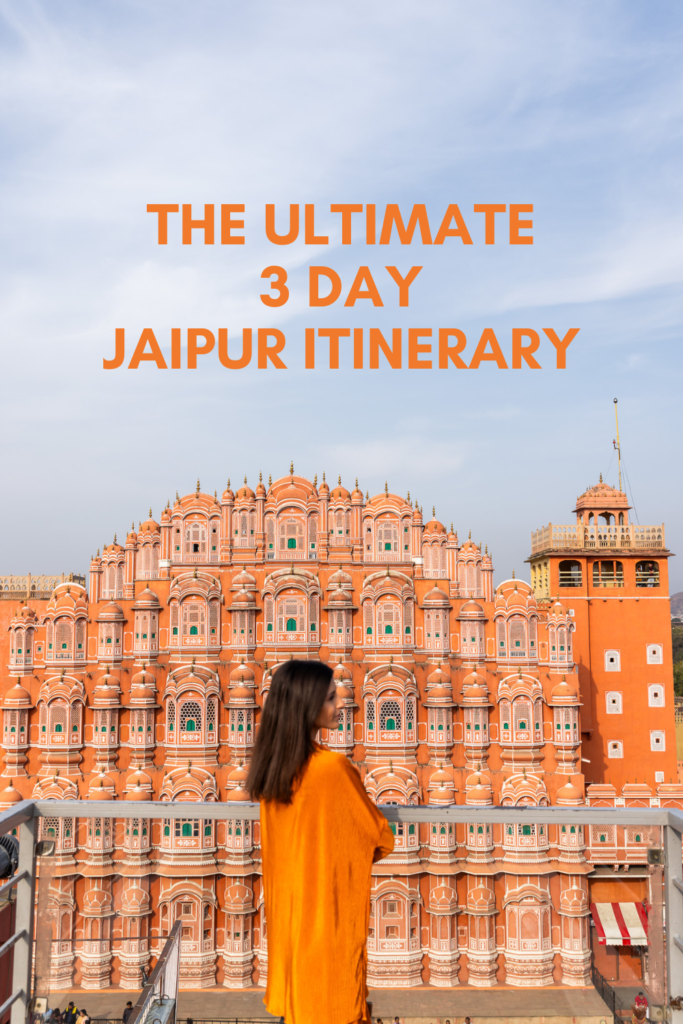
Make sure you buy a Composite Ticket for your trip to Jaipur. It costs 1,000 INR and includes entry to Amer Fort, Albert Hall Museum, Hawa Mahal, Jantar Mantar, Vidyadhar Garden, Nahargarh Fort and Sisodia Garden. You’ll save a LOT of money by having this ticket and you can buy them at most of the attractions when you arrive.
Some links in this post are affiliate links. As an Amazon Associate, I earn from qualifying purchases. It won’t make a difference to what you pay, but I earn a small commission if you purchase something I’ve recommended. I’m really grateful for your trust in my advice, and if I wouldn’t recommend it to a friend, I won’t recommend it to you.
3 DAY JAIPUR itinerary HIGHLIGHTS
#1 The best views of Hawa Mahal
#2 Amer Fort
#3 Jantar Mantar
#4 Cenotaphs
#5 City Palace
#6 Jal Mahal
#7 Nahargarh Fort
#8 Patrika Gate
3 DAY JAIPUR ITINERARY OVERVIEW
Day 1: On your first day in Jaipur you’ll be visiting my favourite place in the city, Hawa Mahal, before heading next door to the City Palace, and then visiting an outdoor observatory
Day 2: This will be your busiest day – you’re starting at Amer Fort, which is a short drive from Jaipur, and making a few stops on the way back.
Day 3: For your final day in Jaipur you’re up early to visit Patrika Gate, before enjoying a leisurely visit to the Albert Hall Museum, and ending the day at Galtaji temple.
3 DAY JAIPUR ITINERARY
DAY 1: HAWA MAHAL, CITY PALACE, JANTAR MANTAR
You’ll spend your first day in Jaipur visiting the incredible Hawa Mahal, exploring the Royal residence, and learning how to track the planets at an outdoor observatory.
#1 – HAWA MAHAL
Begin your 3 days in Jaipur at my favourite place in the city – Hawa Mahal. It’s one of the most iconic buildings in Jaipur, and no trip here would be complete without seeing it.
The palace was built in 1799 as an extension to the women’s quarters in the City palace, and its main purpose was to allow the royal women to observe daily life without being seen by the public.
To achieve this, 953 tiny windows were built into the palace, creating a natural ventilation throughout the building, which is the reason behind its name – Hawa Mahal translates to “Palace of the Winds”.
Although they no longer open, you’re still able to look through the windows and admire the view over of the streets below.
DETAILS:
Opening times | 9:00am – 4:30pm daily
Ticket price | 200 INR for a foreign tourist
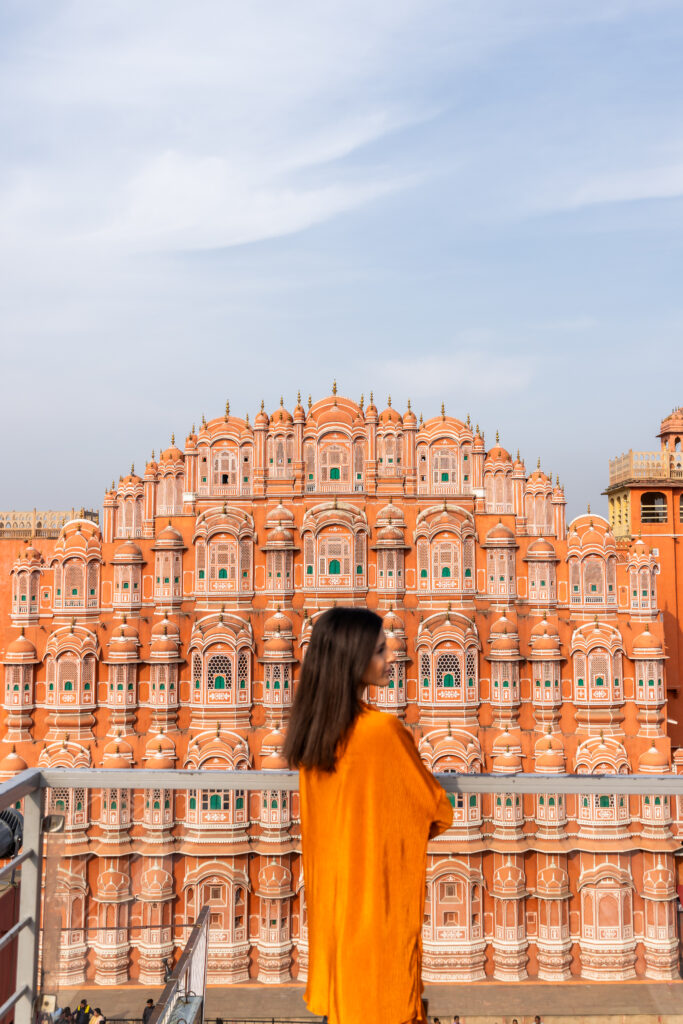
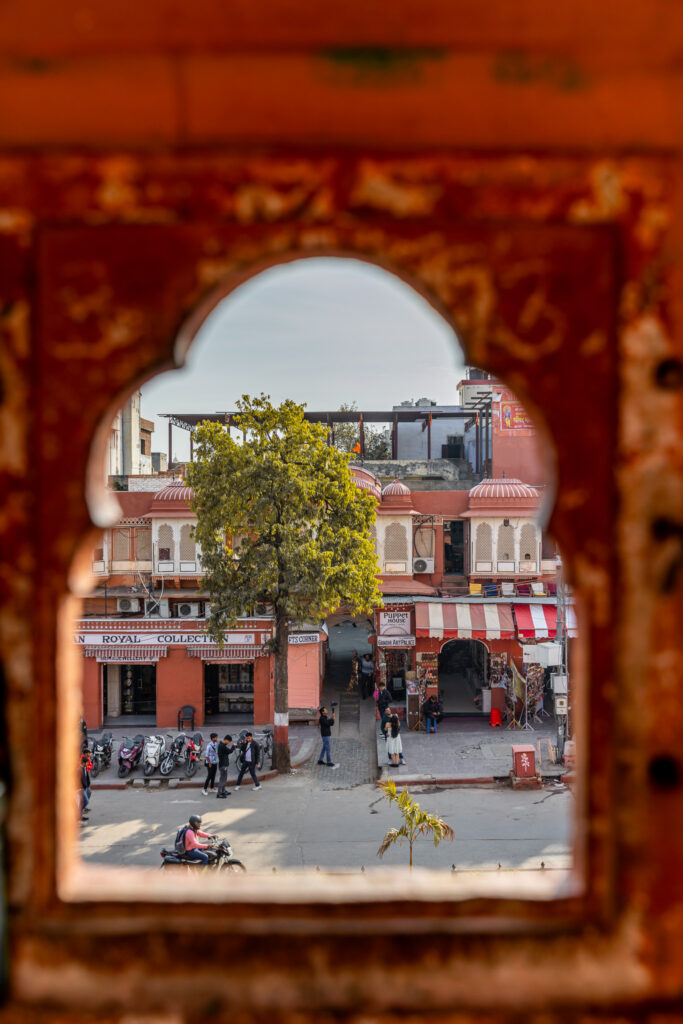
Top tip 💡: For the best views of Hawa Mahal, head to The Tattoo Cafe. This rooftop restaurant has some of the best views of the palace, and is a photographers dream. We arrived at 8:30am and had the whole place to ourselves
#2 CITY PALACE
From Hawa Mahal, it’s a short walk to the City Palace. Built in the 18th century by Maharaja Sawai Jai Singh II when he founded Jaipur – its been the home to the rulers of the city ever since.
Even to this day, the royal family of Jaipur still live in a section of the City Palace. Access to this part of the palace is restricted and depends on when you visit, but you’ll be able to explore the courtyards, gardens and buildings that make up this incredible building.
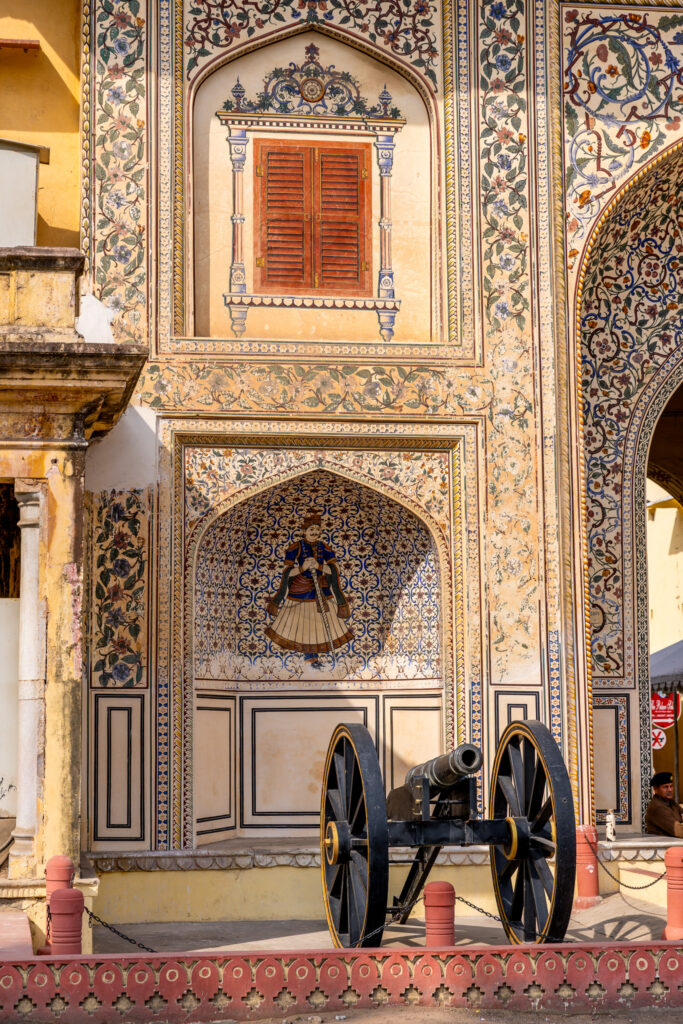
AREAS TO VISIT IN THE PALACE:
Mubarak Mahal: a museum displaying textiles and costumes belonging to the royal family.
Diwan-i-Aam and Diwan-i-Khas: Halls of Public and Private Audience, showcasing paintings and other royal artifacts.
Chandra Mahal: This is the residence of the royal family, but a part of it is open to visitors who purchase a special ticket.
Pritam Niwas Chowk: Known for its beautiful peacock gates representing the seasons and Hindu gods.
The Maharani’s Palace: Converted into a museum displaying weapons and ammunition.
DETAILS:
Opening times | 9:30am – 7:30pm daily
Ticket price | 1,000 INR for a foreign tourist
#3 JANTAR MAnTAR
Next door to the city palace is Jantar Mantar – an astronomical observatory containing 19 astronomical instruments used to track stars, tell the time, and predict the movements of the sun, moon and planets.
It was built in the early 18th century by Maharaja Sawai Jai Singh II (remember, the guy who founded Jaipur). He was a keen astronomer and built five observatories across North India, but Jantar Mantar is the largest and most well preserved, and has been recognised as a UNESCO World Heritage Site.
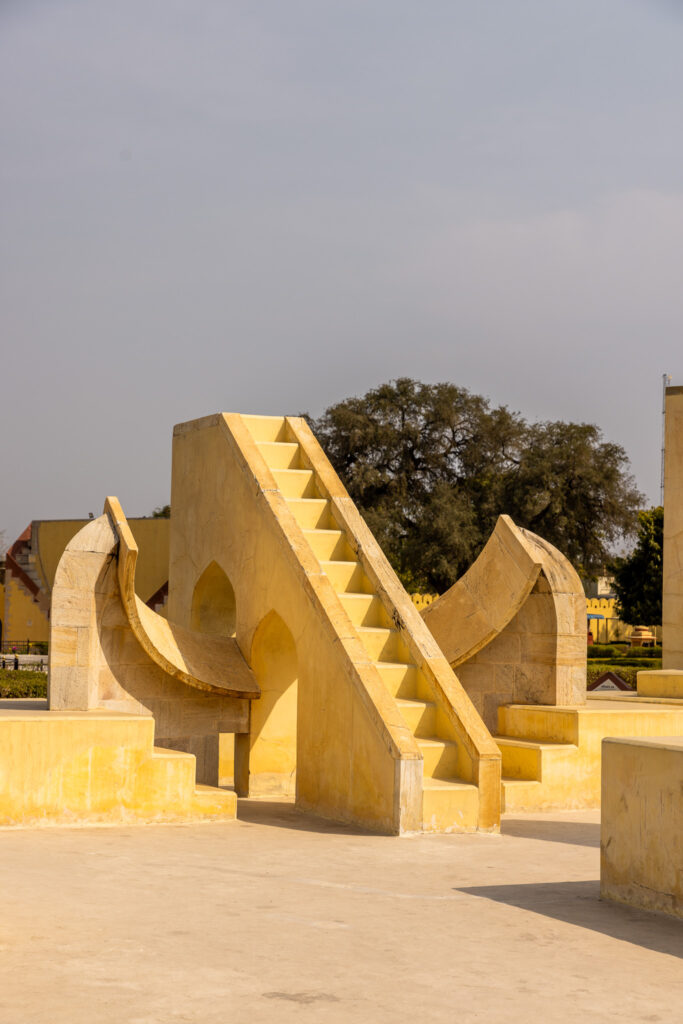
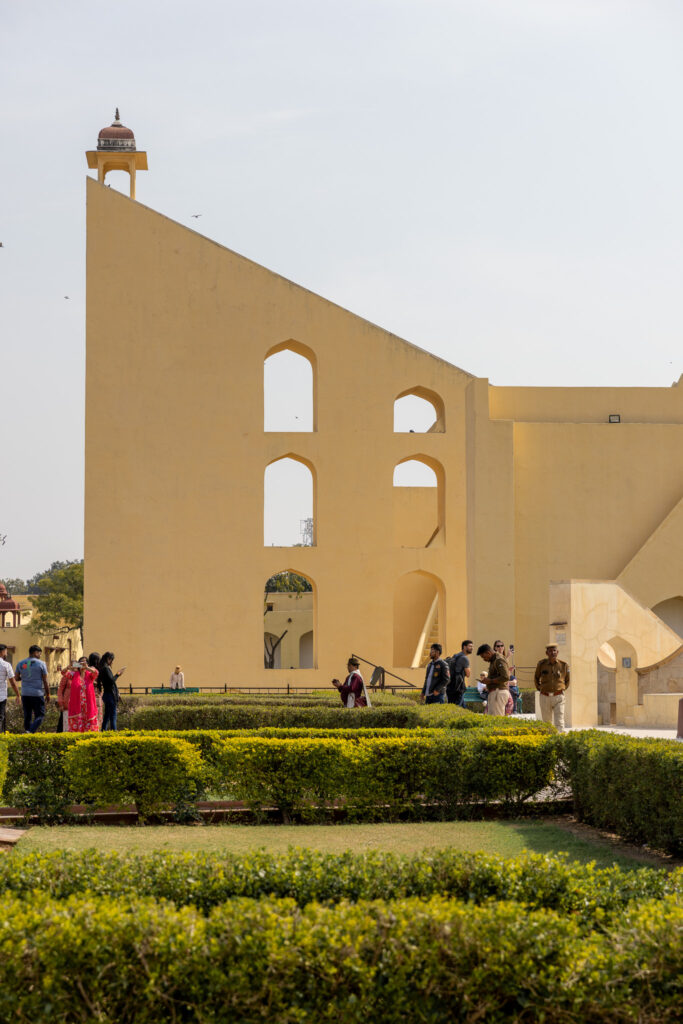
It’s a really interesting place and a must see on your 3 days in Jaipur, but I’d recommend a guide for your visit, as I found it quite difficult to understand what each instrument was used for without one.
DETAILS:
Opening times | 9:00am – 6:00pm daily
Ticket price | 200 INR for a foreign tourist
DAY 2: AMER FORT + STEPWELLS, JAL MAHAL, CENOTAPHS
Day 2 will be your busiest day – you’re starting at Amer Fort, which is a short drive from Jaipur, and making a few stops on the way back.
#1 Amer fort
It’s another early start to get to Amer Fort (also known as Amber Fort/Palace) when it opens at 8am. This place gets BUSY, even just 30 minutes after opening time, so I’d really recommend being one of the first in for a more enjoyable visit.
Depending on where you’re staying, it can take up to 40 minutes to get to Amer Fort, as it’s located about 11km outside of Jaipur, so make sure you leave yourself enough time for the journey.
Amer Fort was built in 1592 as a residence for the Rajput kings, and was strategically located to provide defence against potential invasion.
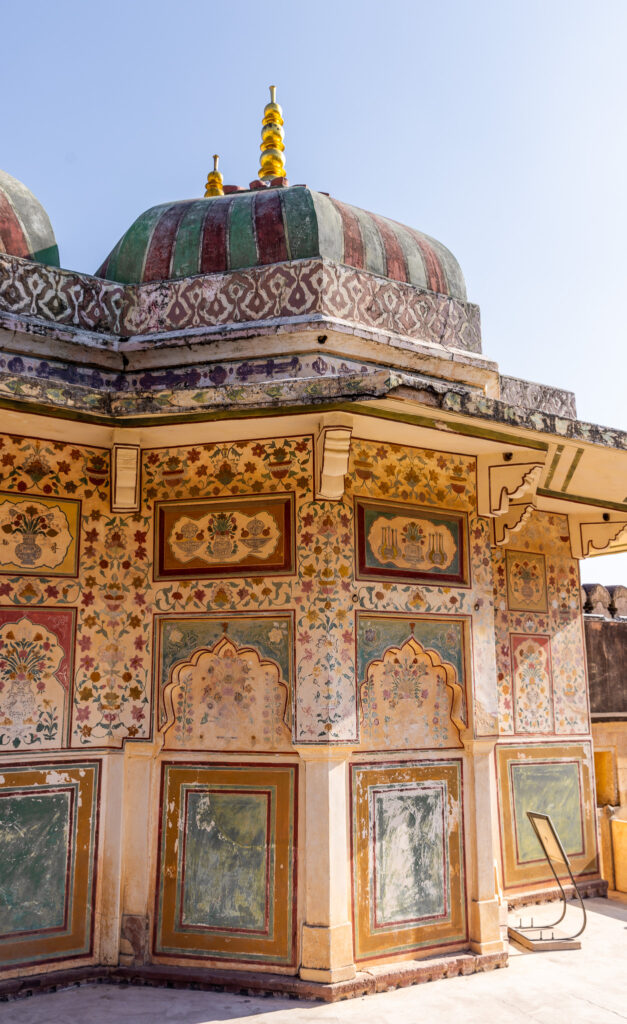
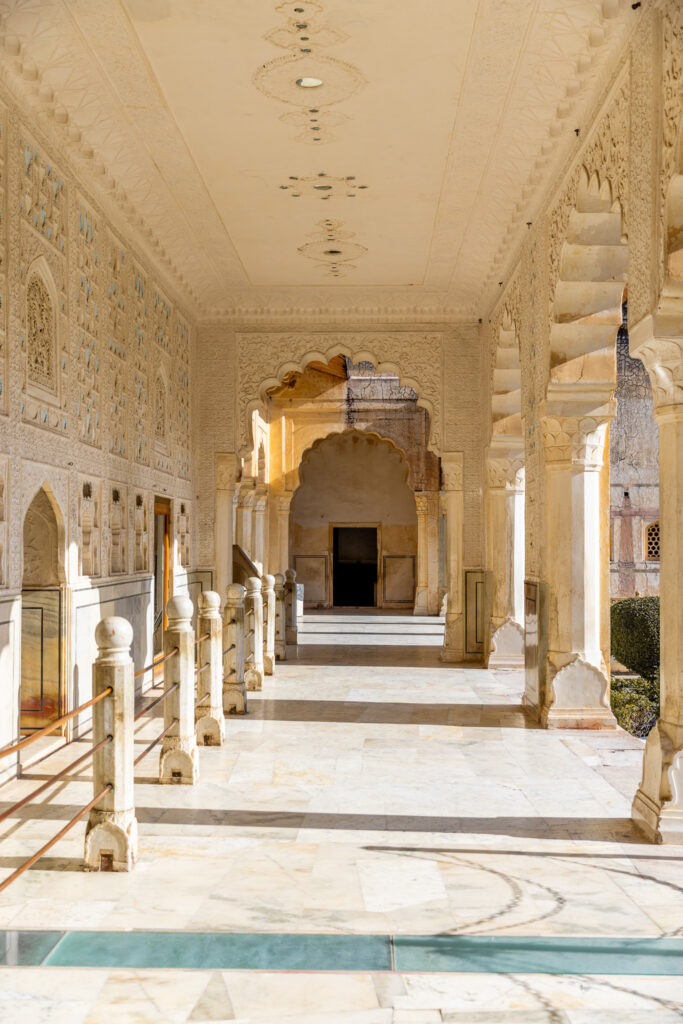
We spent a morning here exploring the extensive fort, and whilst most people flock to the beautiful Ganesh Pol – the intricate gateway that leads to the main palace, my favourite part of the fort was the secret underground passages just before the exit.
There’s a network of underground passages underneath the fort that connect it to the nearby Jaigarh Fort, believed to have been built as escape routes.
They’re hard to spot, so it was only us down there when we visited, but I’d really recommend exploring them as they’re so interesting.
Elephant cruelty at Amer Fort
Amer Fort is one of the most famous forts in India and a must see in Jaipur, but I struggled quite a lot with the overwhelming amount of elephant cruelty here.
I’d read about elephant rides taking place here, but I wasn’t prepared for the extent of it. There’s a constant stream of tourists riding elephants to the entrance, a journey that takes just 10 minutes on foot.
It’s difficult to watch, and although I wouldn’t let it stop you visiting, I think it’s important you know what to expect.
DETAILS:
Opening times | 8:00am – 9:00pm daily
Ticket price | 550 INR for a foreign tourist
#2 Amer STEPWELLS
A 5 minute drive from Amer Fort (you’ll be able to find a Tuk-Tuk outside of the main entrance) is Panna Meena ka Kund, or the Amer Stepwells.
Stepwells were once at the heart of everyday life throughout Rajasthan, built in areas prone to drought so the community had access to water year round.
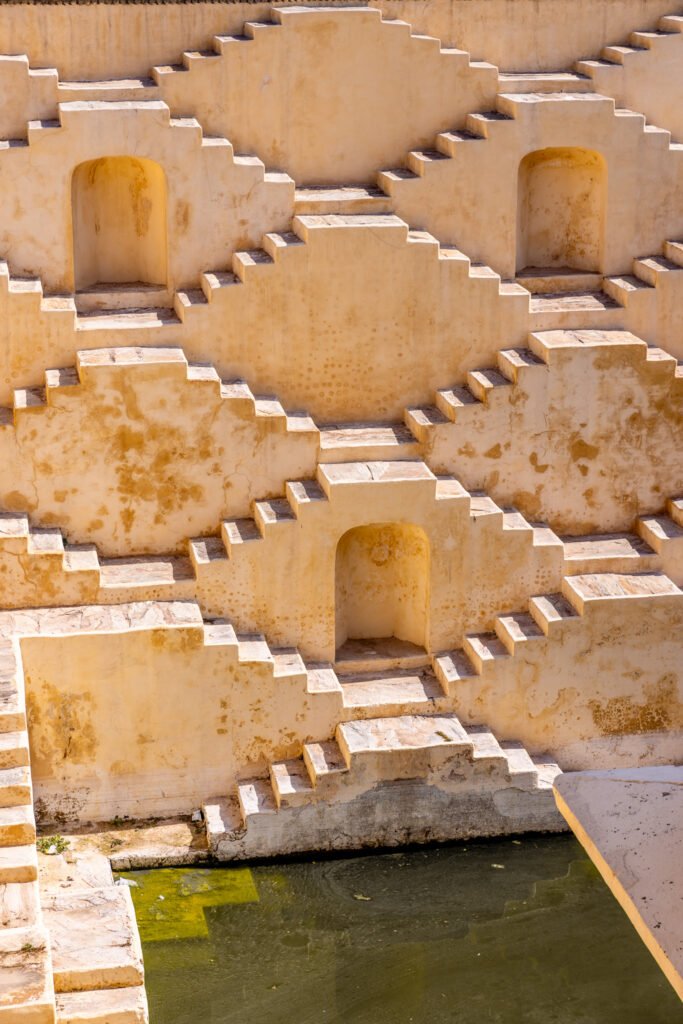
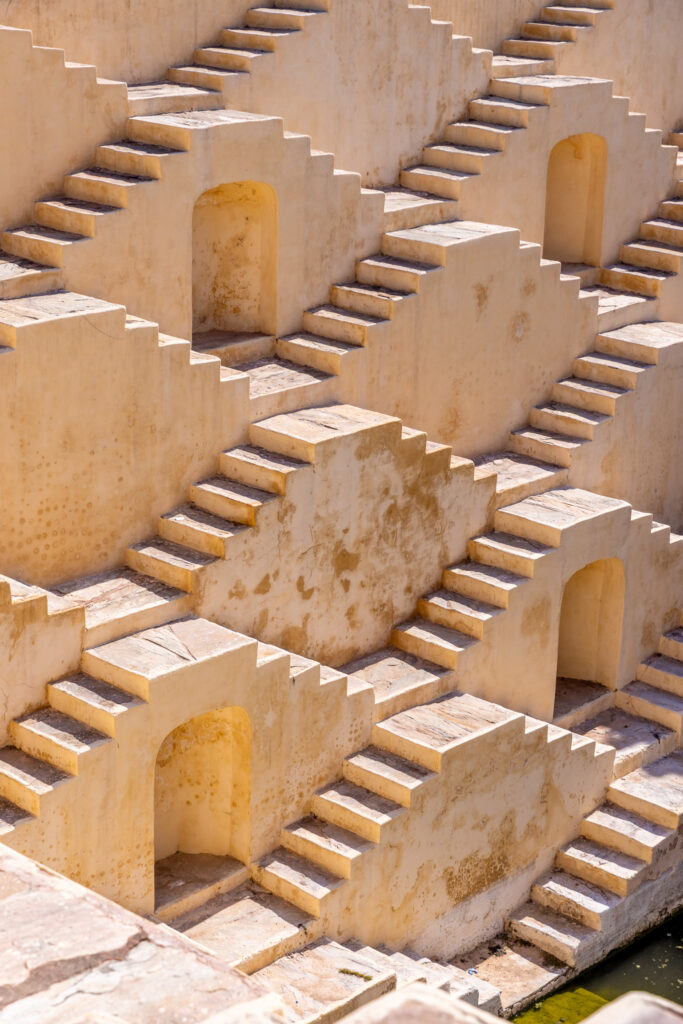
Their design meant that people could step down to access the water at any time of year, regardless of the water level.
As well as acting as essential water storage, they were meeting points for the local people, especially the women, who would gather at the stepwell to chat.
DETAILS:
Opening times | Open 24 hours
Ticket price | Free
#3 JAL MAHAL
On your way back to Jaipur from Amer, stop off at Jal Mahal. Meaning “Water Palace”, Jal Mahal is located in the middle of Man Sagar Lake, and whilst there’s no official record of who built it, it’s widely accepted that Maharaja Madho Singh I constructed it for his duck shooting trips.
The palace spans five-storeys, and when the lake is full, only one of them is visible above the water, making it appear as though its floating on the surface.
Jal Mahal isn’t open for public tours, but you can take a boat ride on Man Sagar Lake if you want a closer look, although I think seeing it from the road is enough.
#4 Maharaniyon Ki Chhatriyan
A 5 minute drive from Jal Mahal is Maharaniyon Ki Chhatriyan – the cenotaph of the Maharanis.
The Cenotaphs in Jaipur are opulent structures that serve as memorials to the royal family. Literally translating as “empty tombs”, this isn’t a burial site, but they’re often found near royal cremation grounds.
This was one of the most interesting things we saw on our 3 days in Jaipur, and there were far less crowds than anywhere else we visited.
Take some time to explore the intricate carvings and ornate designs, you’ll notice that some are grander than others – a reflection of the status of the women they honour.
DETAILS:
Opening times | 10:00am – 6:00pm
Ticket price | 20 INR for a foreign tourist
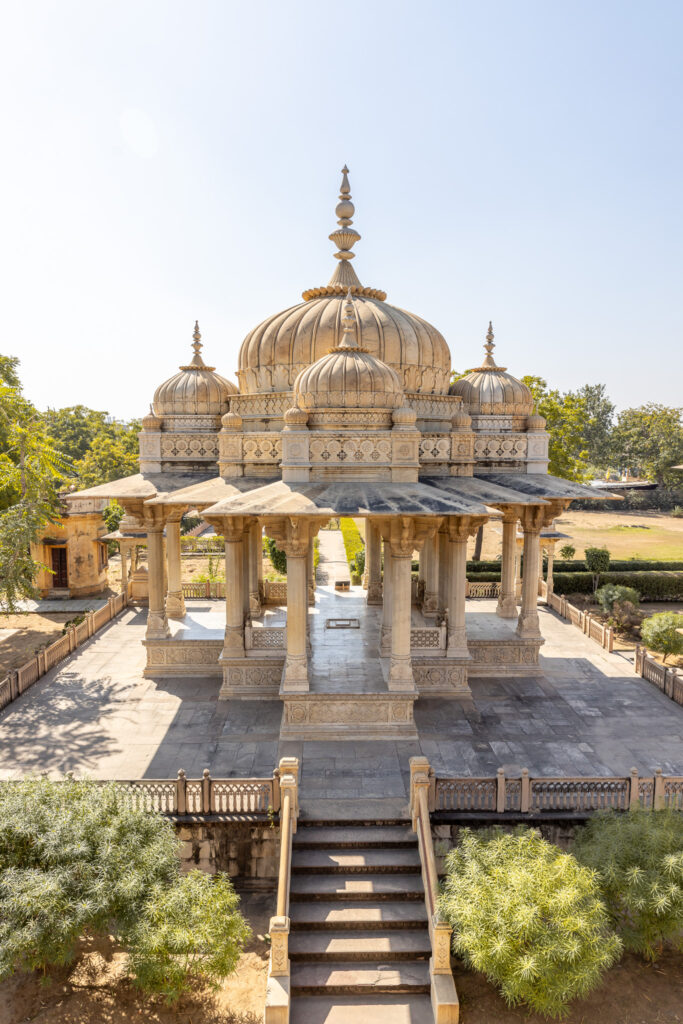
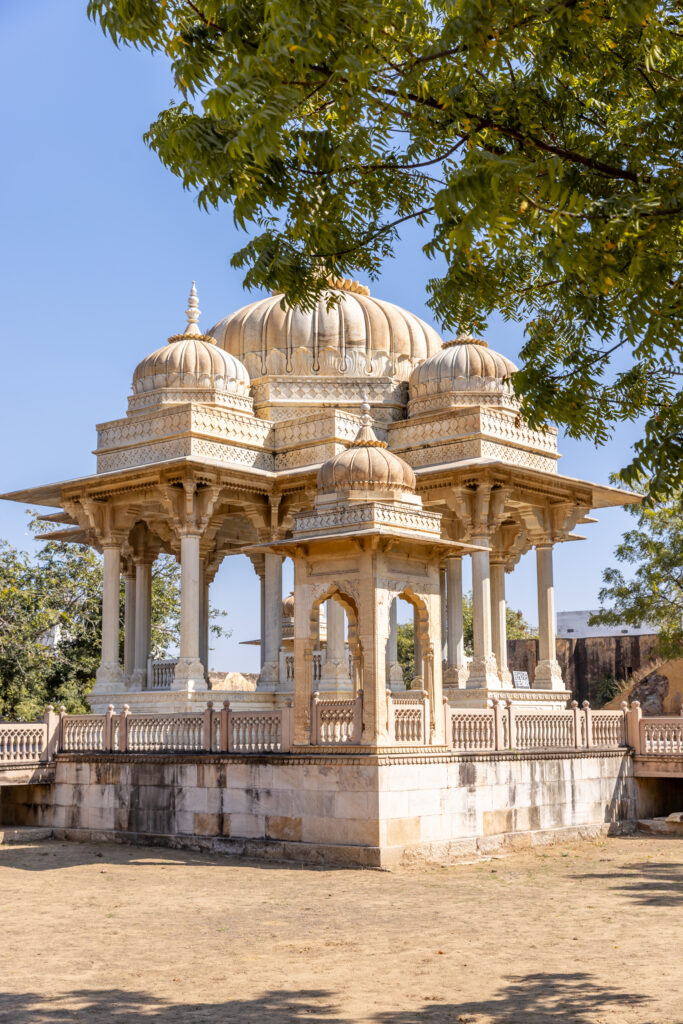
#5 Gaitor Ki Chhatriyan
A short drive away is Gaitor Ki Chhatriyan, the cenotaphs for the Maharajas of Jaipur.
Each cenotaph is individually designed to reflect the Maharaja it commemorates, adorned with intricate carvings, Rajasthani motifs and scenes from Hindu mythology.
DETAILS:
Opening times | 10:00am – 6:30pm
Ticket price | 30 INR for a foreign tourist
SUNSET AT Nahargarh Fort
The Gaitor cenotaphs are located just a short distance from Nahargarh Fort, one of the best places in Jaipur to watch sunset.
The fort was built in 1734 by none other than Maharaja Sawai Jai Singh II, and its position on top of the Aravalli Hills, means you get incredible views over the city from up here.
DAY 3 | PATRIKA GATE, ALBERT HALL MUSEUM + GALTAJI TEMPLE
For your final day in Jaipur you’re up early to visit Patrika Gate, before enjoying a leisurely visit to the Albert Hall Museum, and ending the day at Galtaji temple.
#1 PATRIKA GATE
Patrika Gate is one of the things I was most excited about seeing on my 3 days in Jaipur. It was built in 2016 by the Patrika Group of newspapers, and its design is based on the seven original heritage gates of Jaipur.
A lot of guides will advise you to stop off at Patrika Gate on your way to/from the airport, as they’re located quite close to each other, but unless your flight happens to be arriving before sunrise, I wouldn’t recommend this, as Patrika Gate gets VERY busy.
Top tip 💡: If you want to take photographs, get to Patrika Gate just after sunrise. Wedding photoshoots are very common across Jaipur, but Patrika Gate was the busiest landmark I visited, with two wedding shoots taking up the whole length of the gate for such a long time I had to ask if I could quickly get a photo.
Whilst it primarily functions as an entrance point to Jahawar Circle Park, its colourful design makes it a photographers dream. But make sure you leave some time to visit the park as well.
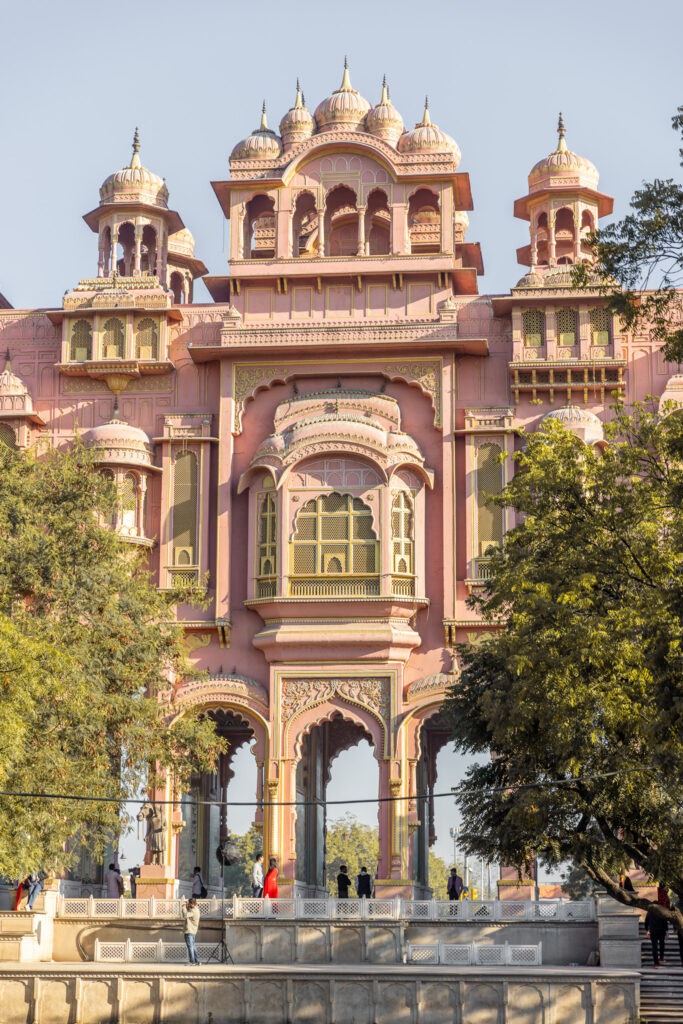
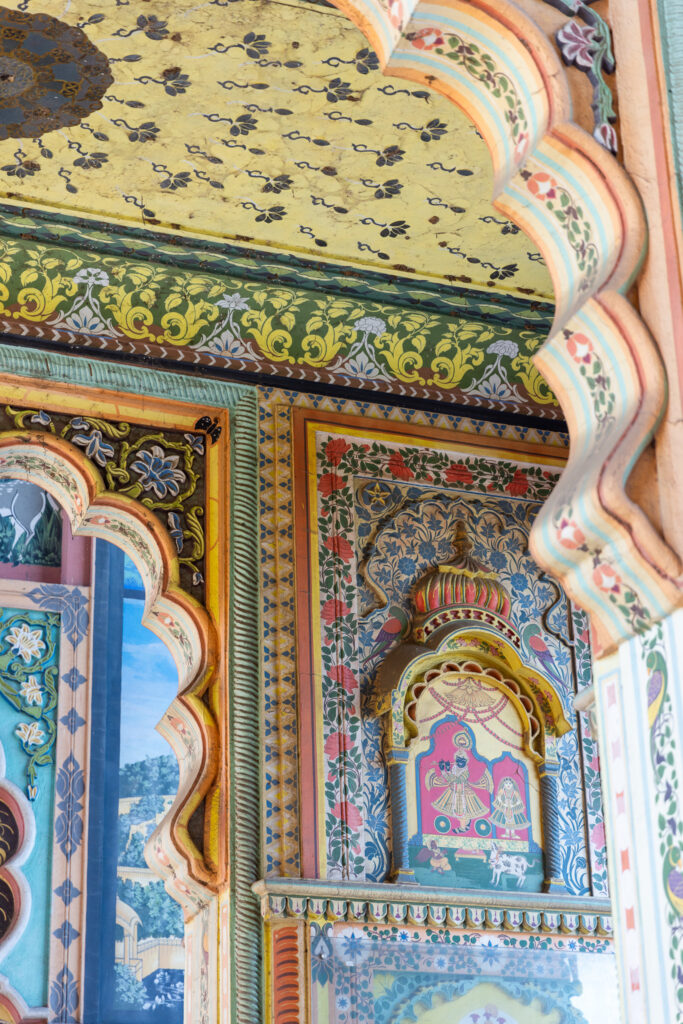
DETAILS:
Opening times | 24/7
Ticket price | Free
#2 ALBERT HALL MUSEUM
The Albert Hall Museum was constructed in 1876 to commemorate the visit of the Prince of Wales, making it the oldest museum in Jaipur.
Did you know it was actually this visit that earned Jaipur its name as the Pink City? At the time of Prince Albert’s visit, pink was the colour of hospitality, and the Maharaja Sawai Ram Singh I ordered the city’s buildings to be painted pink to welcome him to Jaipur
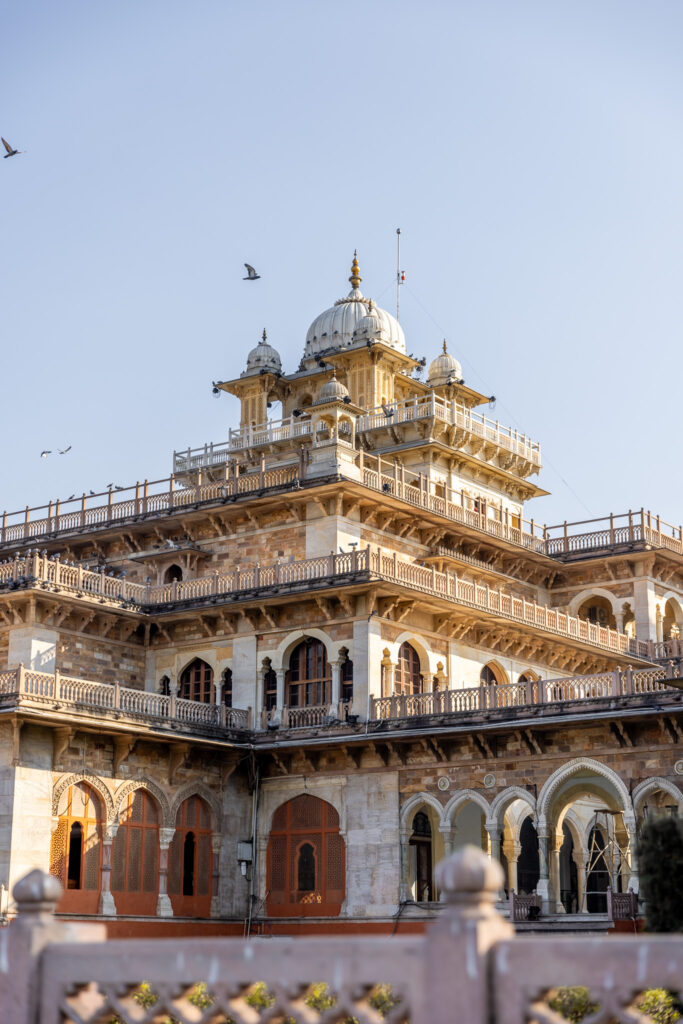
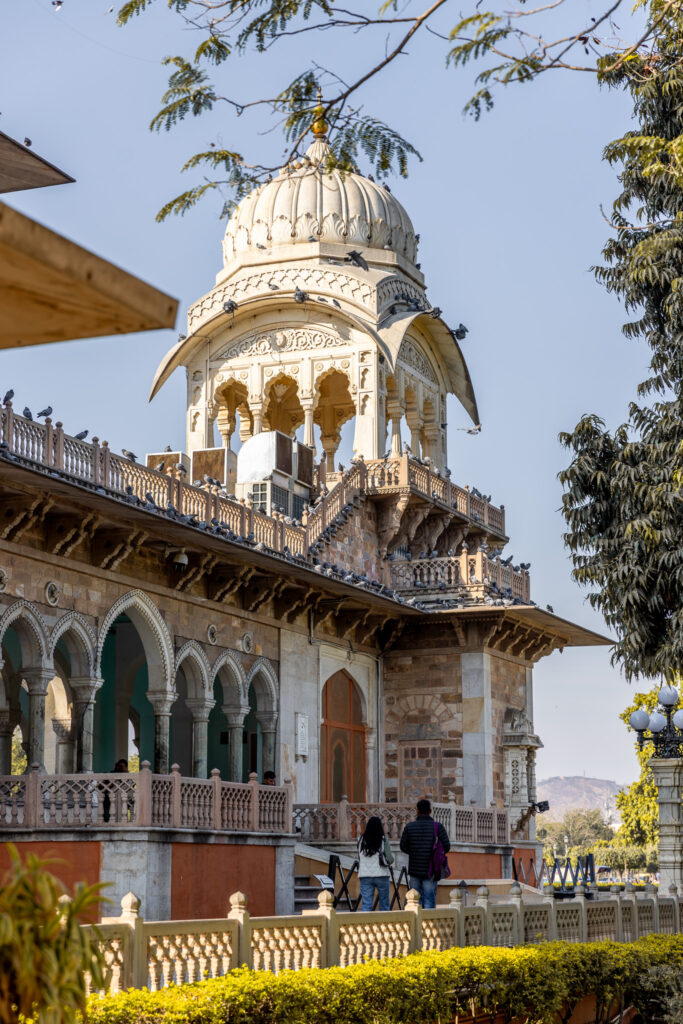
The museum is home to an extensive collection of textiles, paintings, pottery, art and even an Egyptian Mummy.
DETAILS:
Opening times | 9:00am – 5:00pm, and 7:00pm – 9:30pm
Ticket price | 300 INR for a foreign tourist
#3 GALTAJI TEMPLE
Galtaji is a large Hindu temple complex about 10km to the east of Jaipur, often referred to as the Monkey Temple due to the large amounts of monkeys that live in the area.
Its famous for its natural water springs and sacred kunds (water tanks), where Hindu’s come to bathe as they believe the water cleanses the soul.
DETAILS:
Opening times | 5:00am – 7:00pm
Ticket price | Free
WHERE TO EAT IN JAIPUR
Jaipur Modern | A crafts store with a cafe next door, they focus on locally sourced ingredients to support local farming communities in Rajasthan
Earnest Cafe | We ate here twice on our 3 days in Jaipur, they do excellent wraps, salad bowls and pizzas
Paro Bar | A rooftop bar with a DJ and the perfect spot for a few cocktails
Masala Chowk | an open-air food court with a variety of street food stalls
Steam | Located inside a converted steam train, Steam serves a Mediterranean menu
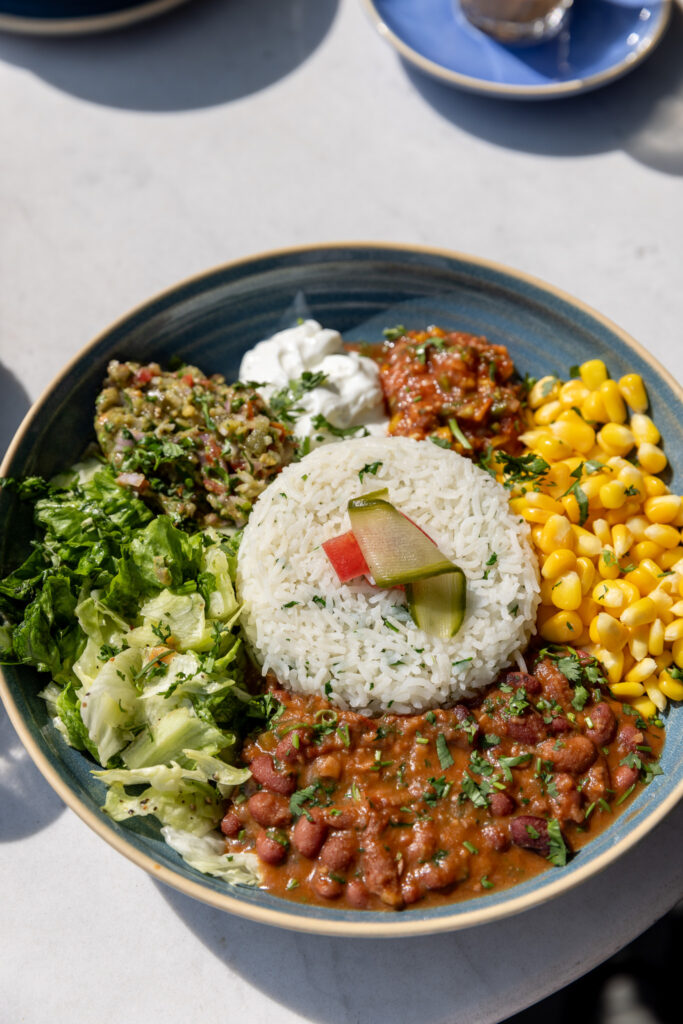
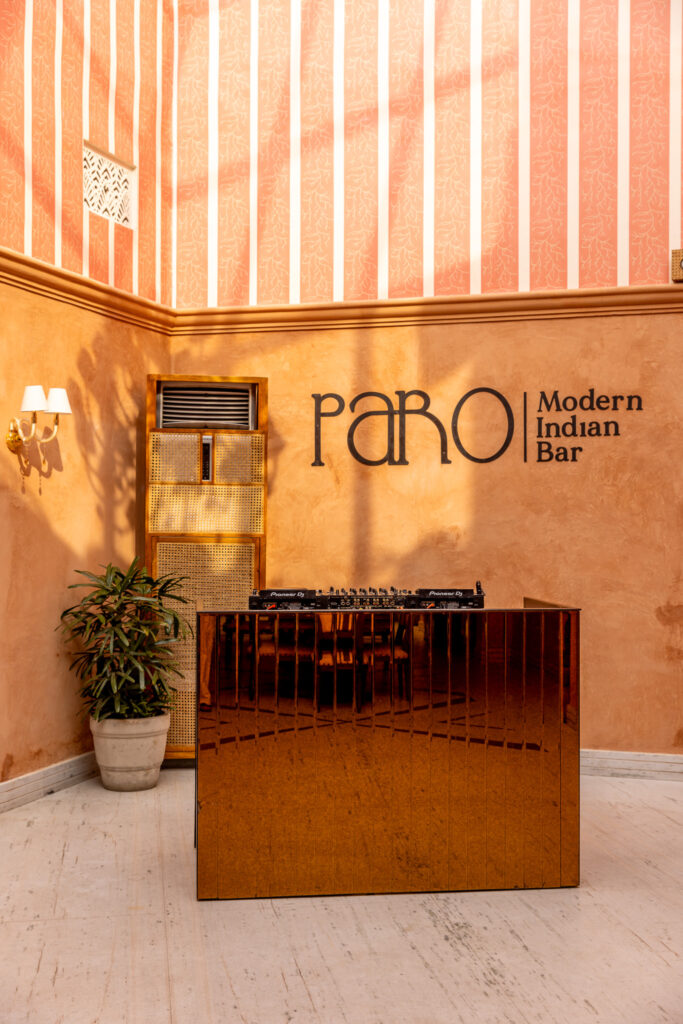
WHERE TO STAY IN JAIPUR
£ Mukam Boutique Homestay
££ Naila Kothi
£££ The Johri
PLANNING YOUR TRIP TO JAIPUR
Get this: Book a Tuk-Tuk tour to take you to see the sights. This one covers most of the places in this guide
Don’t miss: Capture the best photos of the city with a photography tour
Flights | Find the cheapest flights to India with Skyscanner
Stay | Find the best places to stay in India on Booking.com
3 DAYS IN JAIPUR – FAQS
Is 3 days enough in Jaipur?
3 days in Jaipur is enough time to see the main sights, including Amer Fort, Hawa Mahal, the City Palace, Jantar Mantar and the Albert Hall Museum. And you’ll have some time left over to visit the Cenotaphs, catch sunset from Nahargarh Fort and try lots of delicious food.
How do you reach Jaipur from the airport?
To reach Jaipur from the airport, you can take a taxi from outside the terminal, or you can order one through apps like Uber and Ola (India’s version of Uber). Public buses also run from the airport into Jaipur, and they’ll take around 50 minutes.
Is Jaipur walkable?
Jaipur isn’t really walkable, as some of the main attractions like Amer Fort, Jal Mahal and Panna Meena ka Kund are located outside of the city. You can easily find Tuk Tuks to take you where you need to go though, so getting around won’t be an issue.
Which is the most beautiful place in Jaipur?
Jaipur is full of beautiful places, but my favourite is Hawa Mahal. Built so the royal women could peek out into the street without being spotted, the pink palace is an impressive example of Rajput architecture, and is known for its impressive facade that resembles a honeycomb.
Can you go inside Jal Mahal in Jaipur?
No, you’re not able to go inside Jal Mahal in Jaipur, but you can take a boat ride across Man Sagar Lake if you want to get a closer look, although you’re able to get a really good view from the edge of the lake.
When is the best time to visit the Jal Mahal?
I’d recommend visiting Jal Mahal early in the morning or late in the afternoon, as the sun will be lower in the sky and the palace will be illuminated and easier to see. If you visit in the harsh midday sun, it’s much harder to photograph.
Should I go to Udaipur or Jaipur?
Whether you go to Udaipur or Jaipur will depend on your interests. Jaipur offers rich history, majestic forts, and vibrant markets, whilst Udaipur, known as the “City of Lakes,” provides a romantic backdrop with beautiful lakes, palaces, and serene landscapes. If you have time, I’d see them both.
Is Jaipur worth seeing?
Yes, Jaipur is definitely worth seeing. It was one of my favourite places during my 3 weeks in India. It’s home to grand palaces, ancient forts, and vibrant streets. There’s also a great restaurant scene, and plenty of cocktail bars scattered across the city.
TRAVEL ESSENTIALS FOR YOUR TRIP
travel insurance
Whilst I always felt safe in India, you can never predict what might happen during your trip, so having travel insurance is essential.
I use SafetyWing for my travel insurance – they have an easy to use dashboard which keeps your documents in one place so they’re easy to find if you need them, you can add extras such as technology cover, children under 10 are free of charge and you can even start the policy when you’re already on a trip.
DON’T TRAVEL WITHOUT
Liquids bag for the airport | I NEVER travel without this bag and I’ve recommended it to all my friends, and so now they all have one too. It’s a game-changer. No more scrambling around before security shoving your liquids into a sandwich bag. It’s the correct size for the amount you can take on board, so just pack it beforehand and breeze through security.
Extension cable | One of my favourite travel hacks and also something I’d never travel without is an extension cable. This way, you only need one travel adapter. The one I have and swear by is this one – there’s 3 plugs and 6 USB slots, which is more than enough room for both mine and Conor’s devices.
Travel adapter | With an extension cable, you’ll just need one travel adapter, but I always like to buy them before my trip so I’m not frantically searching for a shop when I arrive. Plus, it’s usually a lot cheaper. I’d really recommend getting a worldwide adapter – it can be moved to work with any plug across the world.
